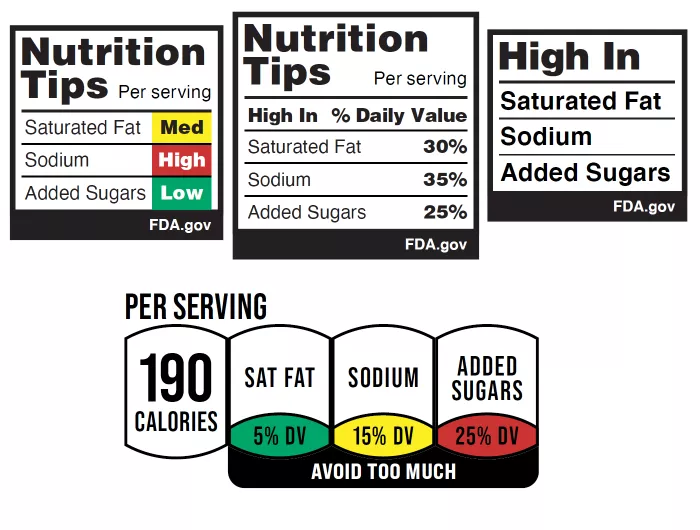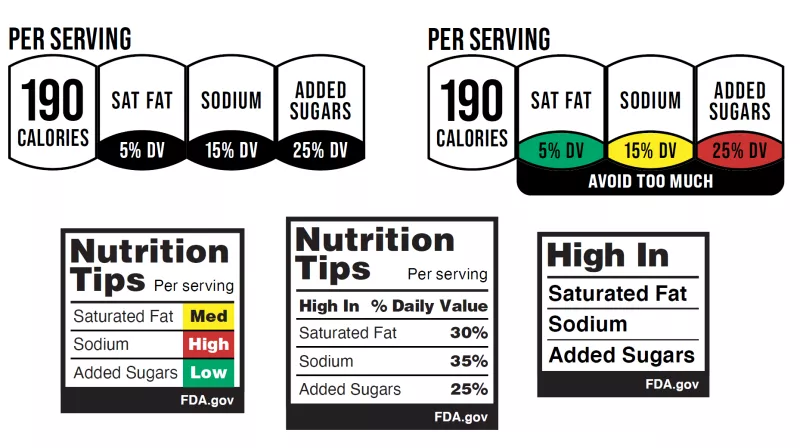Make your voice heard about the future of food labeling

FDA.
Ask FDA to require simple, standardized front-of-package nutrition labels
Back in August, CSPI turned up the pressure on the U.S. Food and Drug Administration (FDA) to adopt mandatory front-of-package nutrition labeling. Specifically, we petitioned FDA to develop labels that would alert consumers when a food is high in sodium, added sugars, or saturated fat and list the number of calories more prominently.
Since then, the call for new labels has grown louder. FDA has heard from more than 5,000 members of CSPI’s action network elevating the call for better labels. The White House also called on FDA to develop new front-of-package food labels in its National Strategy on Hunger, Nutrition, and Health. And members of Congress wrote a letter to FDA imploring the agency to adopt a mandatory front-of-package labeling policy.
FDA is responding to our calls! The agency just released images of the front-of-pack icons it’s considering. It will be conducting experimental studies to examine how consumers respond to the different labels, in support of its plan to select one to be placed on all food packages.
Here are some of the designs that FDA is considering.

As you can see, the labels have a lot in common:
- each is relatively simple compared to the Nutrition Facts panel
- each communicates about levels of specific nutrients as opposed to rating the overall food, like some of the more controversial approaches recently spotlighted in the media
- most include interpretive text (i.e., “High in,” “High/medium/low,” or “Avoid too much”)
- These changes are important because simple, nutrient-specific, interpretive labels are proven to help consumers make healthier choices!
The labels also vary in several respects:
- some contain % Daily Values, some do not
- some are black and white and others have green, yellow, and red
- some focus only on nutrients present in “high” amounts and others rate nutrient levels as “high,” “medium,” or “low”
FDA’s study will examine the impact of the different proposed labels on consumers’ purchase intentions to help narrow down to just one. Based on previous research and experiences in other countries, we predict that the simple “High in” label will have the greatest effect on consumer choices. But we’re all in for whichever design proves most effective for the U.S. population!
Which of these labels do you want to see on store shelves? You can share your thoughts with FDA by submitting a comment here.

